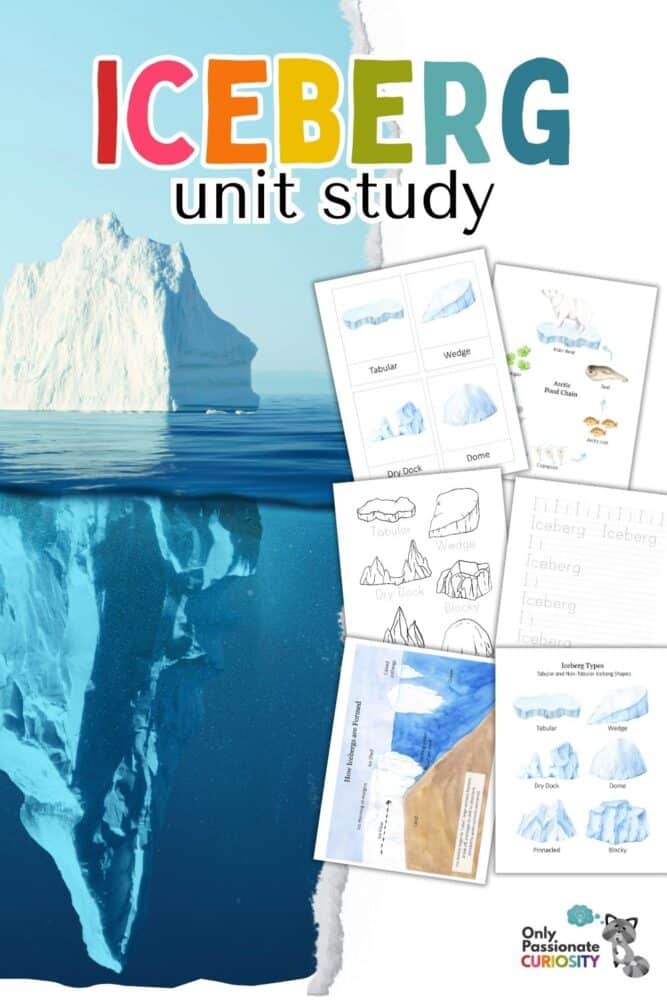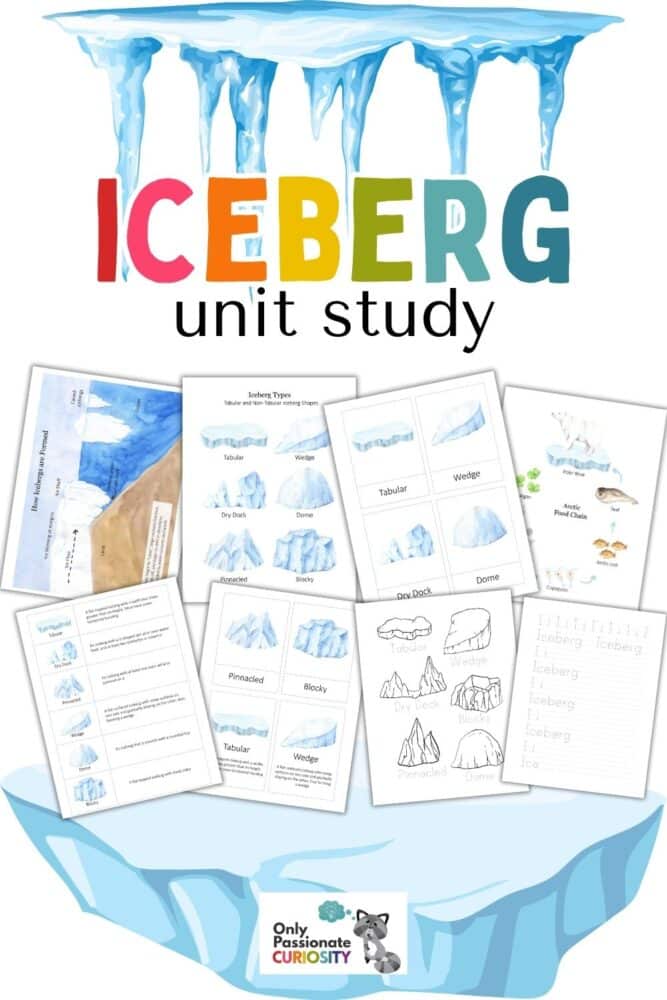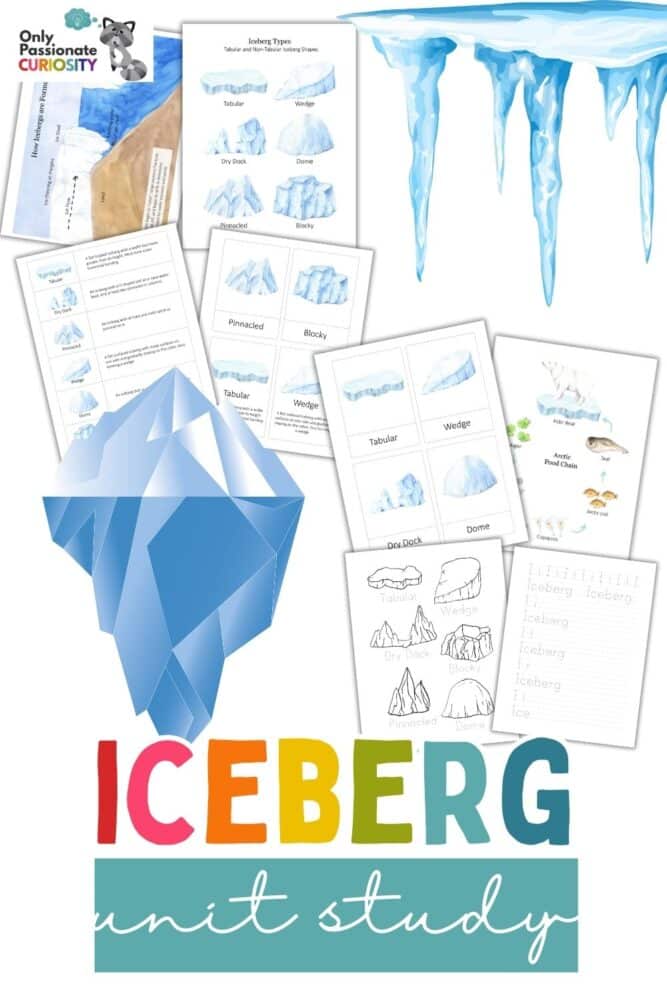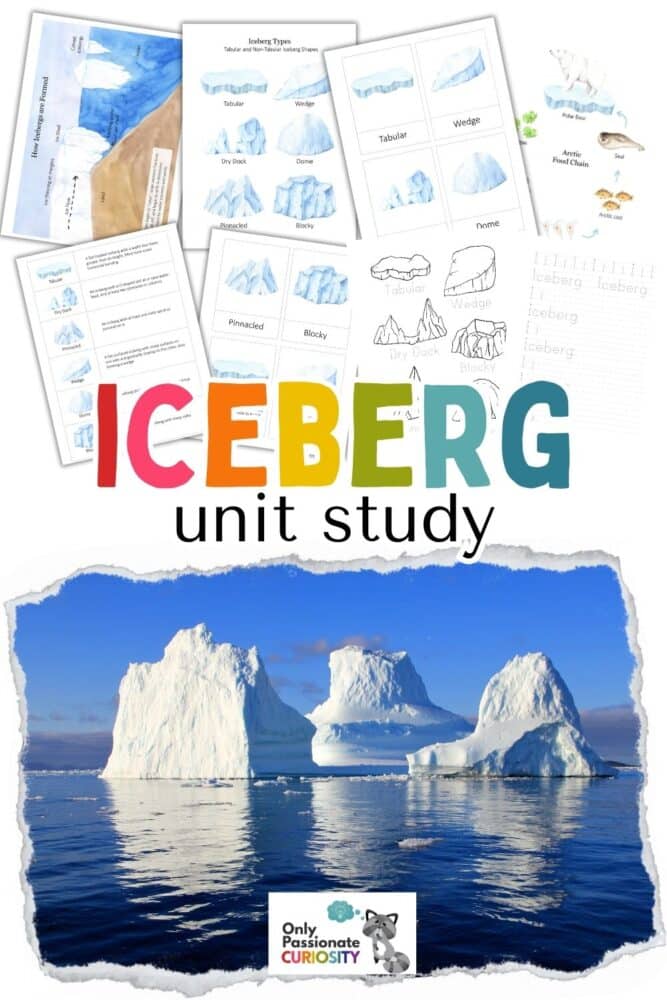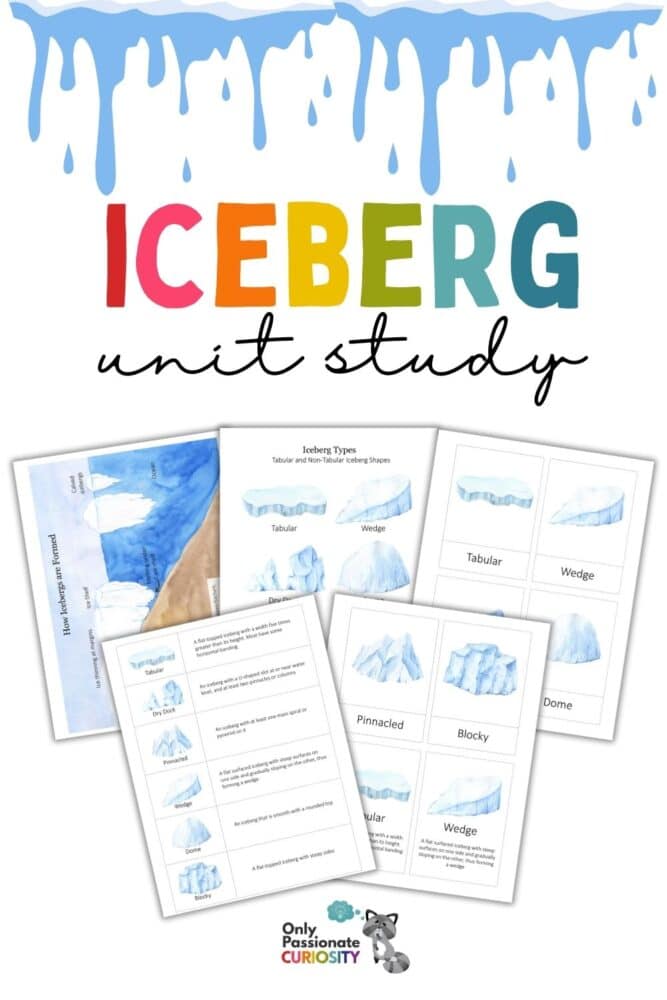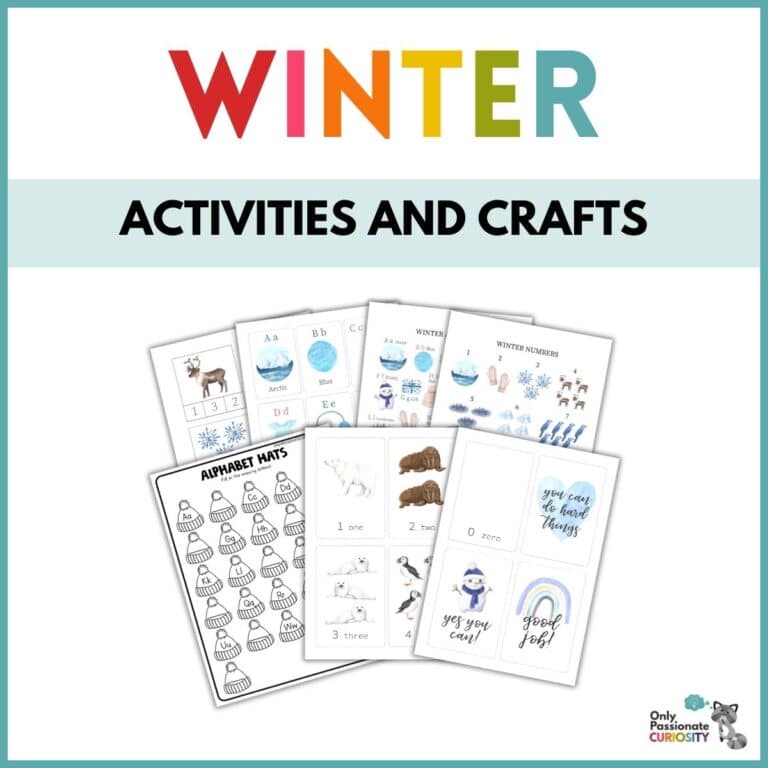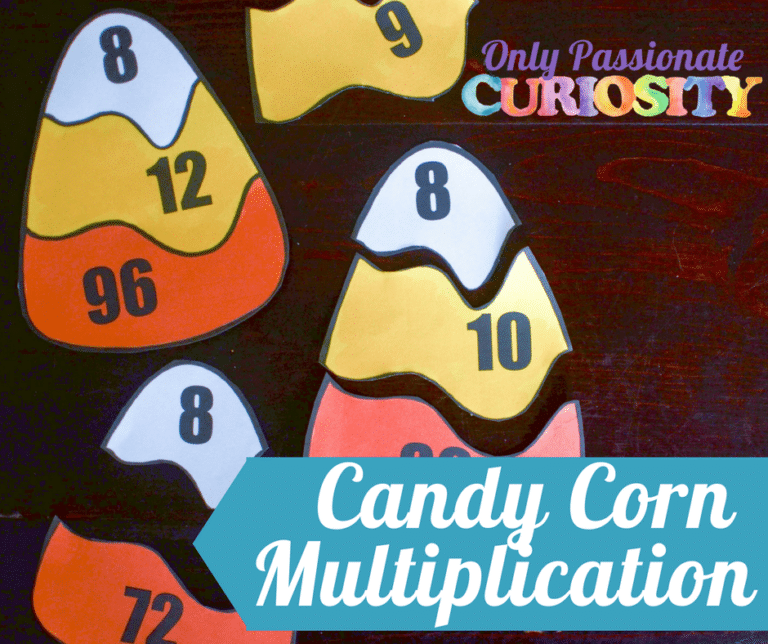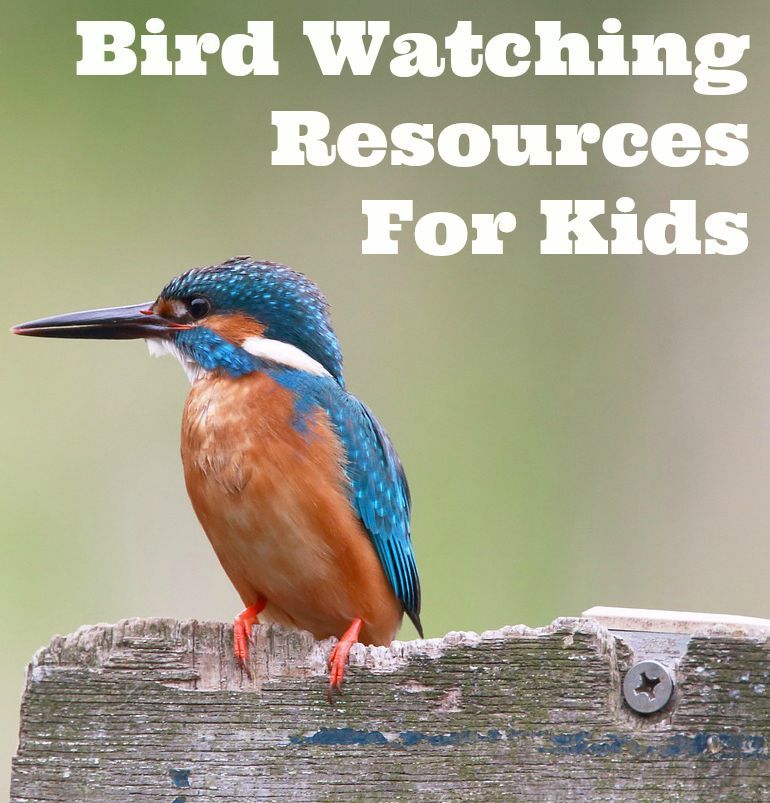Iceberg Unit Study & 9 Fun Facts
Icebergs are fascinating natural phenomena. In this post, we’ve got some fun facts about icebergs, as well as a fascinating video, a free printable, a list of related books for kids, and more to make a great unit study for your homeschool class.
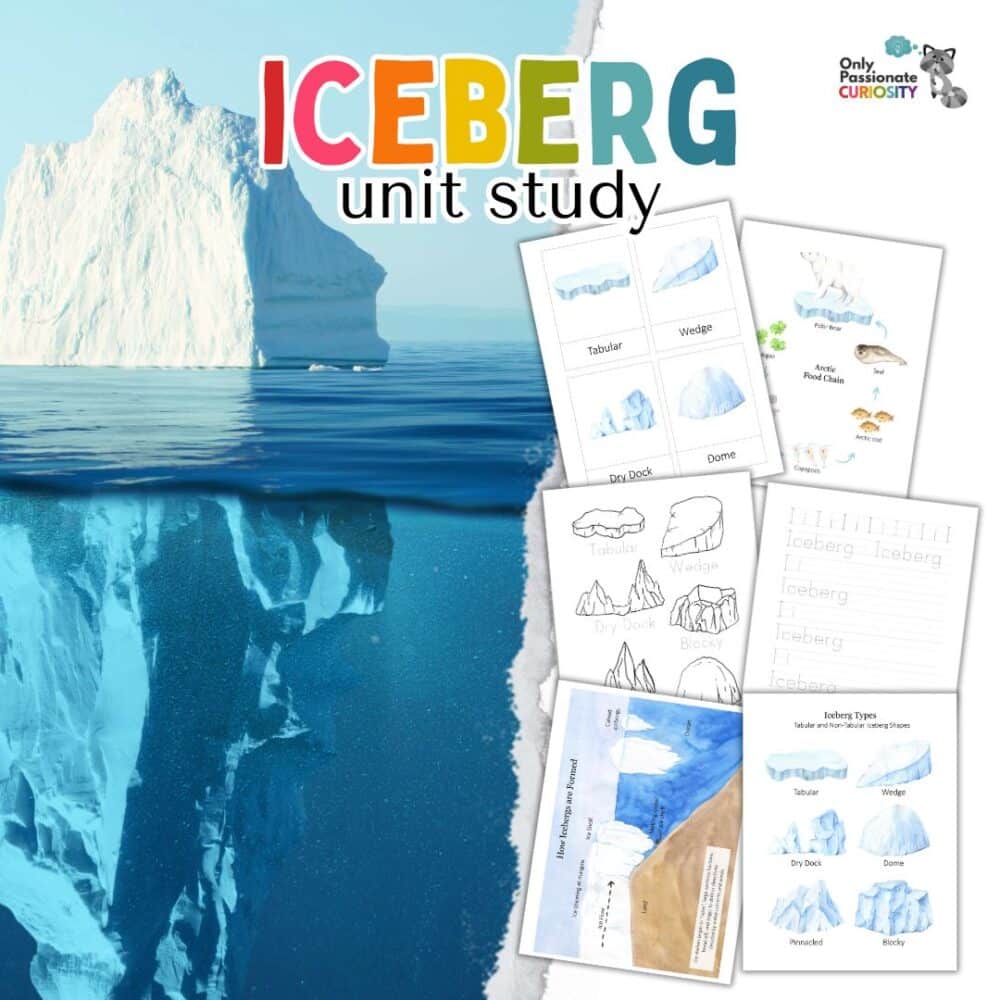
Here are 8 Interesting Facts about Icebergs
Types:
Icebergs come in various shapes and sizes. The most common types are tabular, which have a flat top and steep sides, and non-tabular, which can be irregularly shaped.
Formation:
They are formed when chunks of ice break off from glaciers or ice shelves, a process known as calving. This can happen due to various factors like melting from warmer temperatures, the movement of the glacier, or the pressure exerted by the weight of the ice itself.
Where They Are Found:
Icebergs are primarily found in the polar regions, particularly in Antarctica and the Arctic. However, they can also be found in other areas where glaciers meet the ocean, such as Greenland and Iceland. In the video below, you’ll watch an interesting fact about just how far these huge ice chunks can float!
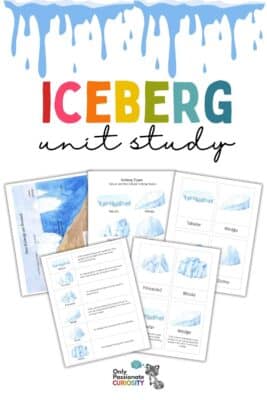
Historical Tidbits:
One of the most famous historical events involving them is the sinking of the RMS Titanic in 1912. The ship struck an iceberg in the North Atlantic Ocean, leading to one of the deadliest maritime disasters in history. This event highlighted the danger they pose to ships and the need for caution when navigating icy waters.
Iceberg Alley:
The water off of Newfoundland and Labrador in Canada is known as “Iceberg Alley” due to the large number of icebergs that drift south from the Arctic each spring. This area is popular among tourists who visit to witness the stunning sight of these massive ice formations.
Size and Shape:
Icebergs can vary widely in size, from small pieces to huge chunks of ice several hundred feet long. Their shapes can also be quite diverse, ranging from towering spires to flat platforms. You can learn more about the size and shape of these interesting ice formations in the free printable below.
Effect on Climate:
These natural phenomena play a role in regulating the Earth’s climate. As they melt, they release freshwater into the ocean, which can affect ocean currents and sea levels. Additionally, their white color reflects sunlight, which can impact local temperatures and ecosystems.
Unique Ecosystems:
Icebergs can create unique ecosystems as they drift through the ocean. Their undersides can be teeming with life, providing a habitat for creatures like algae, krill, and fish. This can attract larger marine animals like whales, making these huge ice floes important hubs of biodiversity in the polar regions.
An Informative Video
Here’s a really interesting video you can watch with your kids to expand your study:
Free Iceberg Printable
This printable will teach your kids about the types and shapes of icebergs as well as how they are formed. You can print out and laminate the fact cards, as well as use the pages to learn more about the Arctic food chain and have your children do handwriting practice as well.
Related Books
If you have kids who are interested in this interesting ice phenomenon, they might enjoy reading one or more of these books!
- Glacier on the Move
- If You Were a Kid Aboard the Titanic
- Titanic Hit an Iceberg!
- Castles in the Sea
- Icebergs, Ice caps, and Glaciers
More Posts on Ice, Snow, and the Arctic
If you’re doing a study on ice, snow, and other winter topics, check out the posts below for related material.
- Salt and Ice Experiments for Kids
- 20+ Winter Activities, Crafts, and Fun Ideas
- A Science Experiment Exploring Ice
- Interactive Arctic and Antarctic Comparison
- Arctic Sensory Bin



